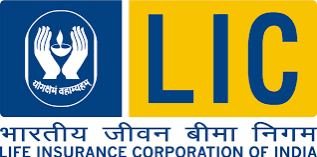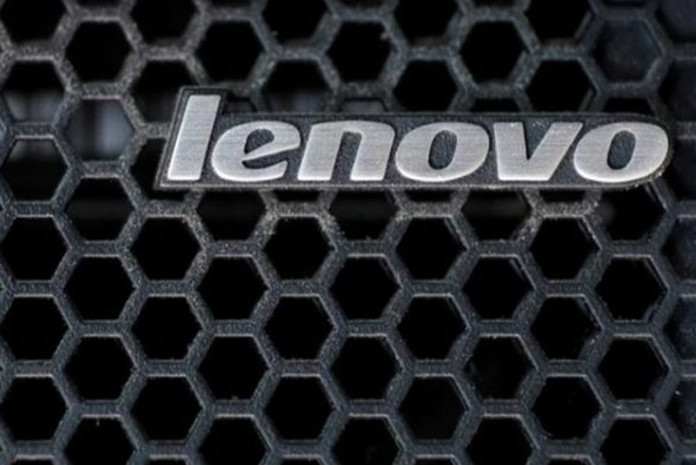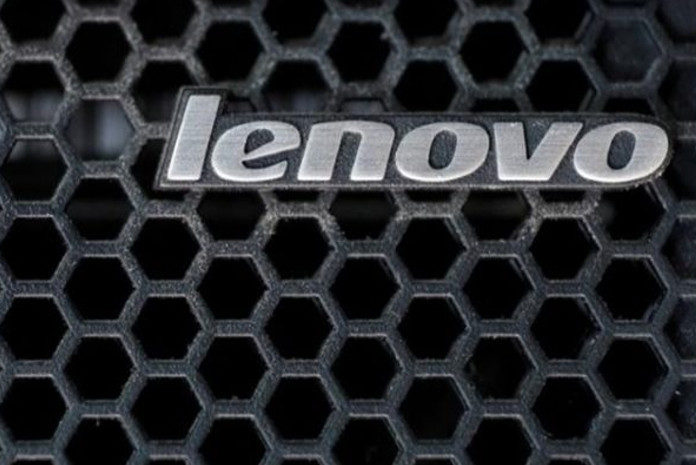At NVIDIA GTC, Lenovo unveiled new Lenovo Hybrid AI Advantage with NVIDIA solutions designed to accelerate AI adoption and boost business productivity by fast-tracking agentic AI that can reason, plan and take action to reach goals faster. The validated, full-stack AI solutions enable enterprises to quickly build and deploy AI agents for a broad range of high-demand use cases, increasing productivity, agility and trust while accelerating the next wave of AI reasoning for the new era of agentic AI.
New global IDC research commissioned by Lenovo reveals that ROI remains the greatest AI adoption barrier, despite a three-fold spend increase1. AI agents are revolutionising enterprise workflows and lowering barriers to ROI by supporting employees with complex problem-solving, coding, and multistep planning that drives speed, innovation and productivity. As CIOs and business leaders seek tangible return on AI investment, Lenovo is delivering hybrid AI solutions that unleash and customise agentic AI at every scale.
The AI solutions combine Lenovo’s full-stack AI portfolio and ready-to-customise use cases with new platform options that will support the latest NVIDIA Blackwell Ultra platform, NVIDIA RTX PRO 6000 Blackwell Server Edition GPUs, and networking innovations to empower organisations everywhere to accelerate applications, such as AI reasoning, agentic AI and real-time video generation.
“Lenovo continues to drive smarter AI for all, bringing together AI models, data and computing power – running on devices, edge, and cloud, and connected with network- to deliver AI solutions that empower human innovation and enable productivity gains,” said Lenovo Chairman and CEO Yuanqing Yang. “Lenovo Hybrid AI Advantage with NVIDIA integrates cutting-edge services and the next evolution of Blackwell accelerated infrastructure to help enterprises easily scale agentic AI across private and public AI models that deliver substantial benefits in effectiveness, cost, efficiency, security, accessibility and customisation.”
“Lenovo Hybrid AI Advantage with NVIDIA combines cutting-edge services with the latest NVIDIA Blackwell platform to deliver end-to-end AI solutions. This empowers Indian enterprises to seamlessly scale agentic AI across private and public models,” said Amit Luthra, Managing Director, Lenovo Infrastructure Solutions Group, India. “With AI adoption in India set to contribute over $500 billion to the economy by 2025, businesses can now develop and deploy AI agents within weeks—driving productivity, efficiency, and innovation. At Lenovo, we are committed to accelerating this transformation and delivering real ROI at scale.”
“AI agents that can reason and adapt are redefining how we work,” said NVIDIA founder and CEO Jensen Huang. “NVIDIA and Lenovo are providing the essential infrastructure to power AI inference and reasoning at scale—bringing generative and agentic AI from research labs into real-world enterprise applications.”
Hybrid AI defines the next Era and fuels Agentic AI
Data exists everywhere – in manufacturing, retail, banking, healthcare business locations, enterprise data centres and in the public domain. Hybrid infrastructure allows data to be collected, stored, processed, and then fed into enterprise AI models for training in the hybrid cloud, and provides inferencing at the edge or on devices with training models.
The new offerings leverage Lenovo’s leadership in hybrid infrastructure and the recently announced Lenovo Hybrid AI Advantage with NVIDIA to efficiently scale agentic AI across business locations using a factory-type approach that turns data intelligence from everywhere into transformational outcomes.
Fully validated and tested Agentic AI use cases
The Lenovo Hybrid AI Advantage with NVIDIA framework includes the Lenovo AI Library, which consists of a portfolio of customised, tested and proven use cases empowering teams to be more productive and deliver AI. Agentic AI can be uniquely accessed on personal devices, workstations, and data centres across enterprise locations and enable ROI in key areas, such as:
- Content Generation – Automating content creation up to 8x faster, enhancing quality, and personalising customer interactions.1
- Customer Service – Improving customer service efficiency by 50% with reduced response times, automating chatbot interactions, and reducing handling times by 20%2
- Knowledge Assistants – Breaking down data silos, enhancing enterprise knowledge sharing, and automating workflows, such as faster contract reviews. For legal teams, for example, this has boosted productivity by up to 80% and enhanced accuracy by 45%.3
At NVIDIA GTC, Lenovo debuted the Lenovo AI Knowledge Assistant, a digital human assistant that engaged in real-time conversation with attendees to transform their event experiences and navigation. Powered by the Lenovo agentic AI platform, the solution enables organisations to rapidly customise Lenovo AI Library use cases and operationalise new AI agents and assistants within weeks. The demo was customised using the digital human NVIDIA AI Blueprint and NVIDIA NIM™ microservices, running on a Lenovo PX ThinkStation.
Attendees used natural voice and language to interact with the AI assistant about relevant event details, maps, schedules and meeting locations, maximising their time and optimising navigation. The demo brings to life how Lenovo’s tested and proven solutions can help businesses get customised agentic AI up and running faster, connecting and collaborating with customers and employees on a whole new level to improve outcomes and experiences.
The Lenovo agentic AI platform, the industry’s most complete on-prem agentic AI solution, simplifies deployment so customers can scale agentic AI across personal, enterprise, and public environments to automate workflows, boost productivity, and accelerate decision-making. Fully integrated with the NVIDIA AI Enterprise software platform, it includes essential software toolkits, advanced data tools, pre-trained models, and automated deployment features. Lenovo AI services and experts provide guidance to streamline adoption while ensuring AI delivers real value. The platform also prioritises security and trust with a Responsible AI framework and a GenAIOps dashboard for centralised AI management, performance monitoring, and bias detection.
Enterprise-ready hybrid AI factory for scalable growth
As the world transitions to accelerated computing for AI workloads, Lenovo is helping businesses quickly build, scale and operate their own AI factories — high-performance, scalable and protected environments for delivering trusted AI solutions. These new platforms help organisations efficiently build, scale and integrate agentic AI across business locations using validated designs that support multiple workloads with standardised, modular, hybrid deployment options. The factories simplify AI training, inferencing, and deployment—whether on-premises, in the cloud, or at the edge.
Delivering full-stack data centre infrastructure that includes workstations, servers, networking, storage, partner solutions and services, the hybrid AI factory platforms are built with Lenovo Validated Designs based on NVIDIA Enterprise Reference Architectures and NVIDIA-Certified Lenovo ThinkSystem servers. The factory options include the Lenovo ThinkSystem SR675, 680, 685 servers and storage solutions using NVIDIA Hopper GPUs, NVIDIA Blackwell GPUs, NVIDIA Grace™ CPUs, NVIDIA Spectrum-X networking, and NVIDIA BlueField DPUs.
For data centres, the Lenovo ThinkSystem SR675 V3 server, equipped with NVIDIA H200 NVL, NVIDIA Networking and NVIDIA AI Enterprise software platform delivers exceptional performance for AI and HPC workloads. The platform scales from a single server, with just 4 GPUs as a starter environment, to a rack scalable unit (SU), offering a turnkey infrastructure solution that enables enterprises of all sizes to quickly deploy a hybrid AI factory or extend their existing IT infrastructure.
Lenovo’s AI factory ecosystem also includes:
- AI-ready Lenovo ThinkStation PX workstations with NVIDIA RTX PRO 6000 Blackwell Workstation Edition and NVIDIA AI Workbench for developers.
- Lenovo Neptune liquid-cooled AI infrastructure, efficiently powering AI at scale and built with the next generation of NVIDIA accelerated computing for cloud service providers tackling LLM workloads.
- Lenovo AI fast start services for rapid deployment, integration, and scaling that helps businesses deploy use cases and prove business value in 90 days or less.
Driving the next AI breakthroughs
Across industries, Lenovo hybrid AI solutions are already transforming healthcare, finance, manufacturing and retail—from summarising medical research and automating compliance reporting to enhancing customer experiences with intelligent recommendations. Lenovo and NVIDIA are working with leading institutions and enterprises to unlock AI’s potential. In Germany, Lenovo secured the first NVIDIA GB200 project with the Technical University of Darmstadt to advance scientific discoveries. The project will feature the new energy-efficient Lenovo ThinkSystem SC777 V4 Neptune systems, advanced high-performance servers powered by Lenovo’s 6th generation Neptune direct water-cooling platform and services. This collaboration builds on the strong partnership between Lenovo and Technical University of Darmstadt, further enhancing the sustainable and high-performance ‘Lichtenberg NHR-Stage 1’ Supercomputer with a pioneering next-gen Grace-Blackwell partition.
To optimise the patient experience and medical evaluations in preventive health check-ups, the healthcare software development company, Artificial Intelligence System for Human Analysis (AISHA) trained an AI model to analyse MRI scans using a Lenovo and NVIDIA hybrid AI solution. The AI model can analyse a full-body scan in just 30 minutes—over 99% faster than manual analysis—providing doctors with rapid insight and enhancing the patient check-up experience.
“Without the power of the Lenovo and NVIDIA solution, the model would simply not be able to exist. Lenovo and NVIDIA are unmatched in the field of AI,” said Dr. Juan Pablo Reyes Gonzalez, Head of AISHA.
The future of AI is hybrid
By simplifying AI adoption and scalability, Lenovo Hybrid AI Advantage with NVIDIA solutions are helping organisations across industries unlock data from anywhere to harness AI for real business value.














